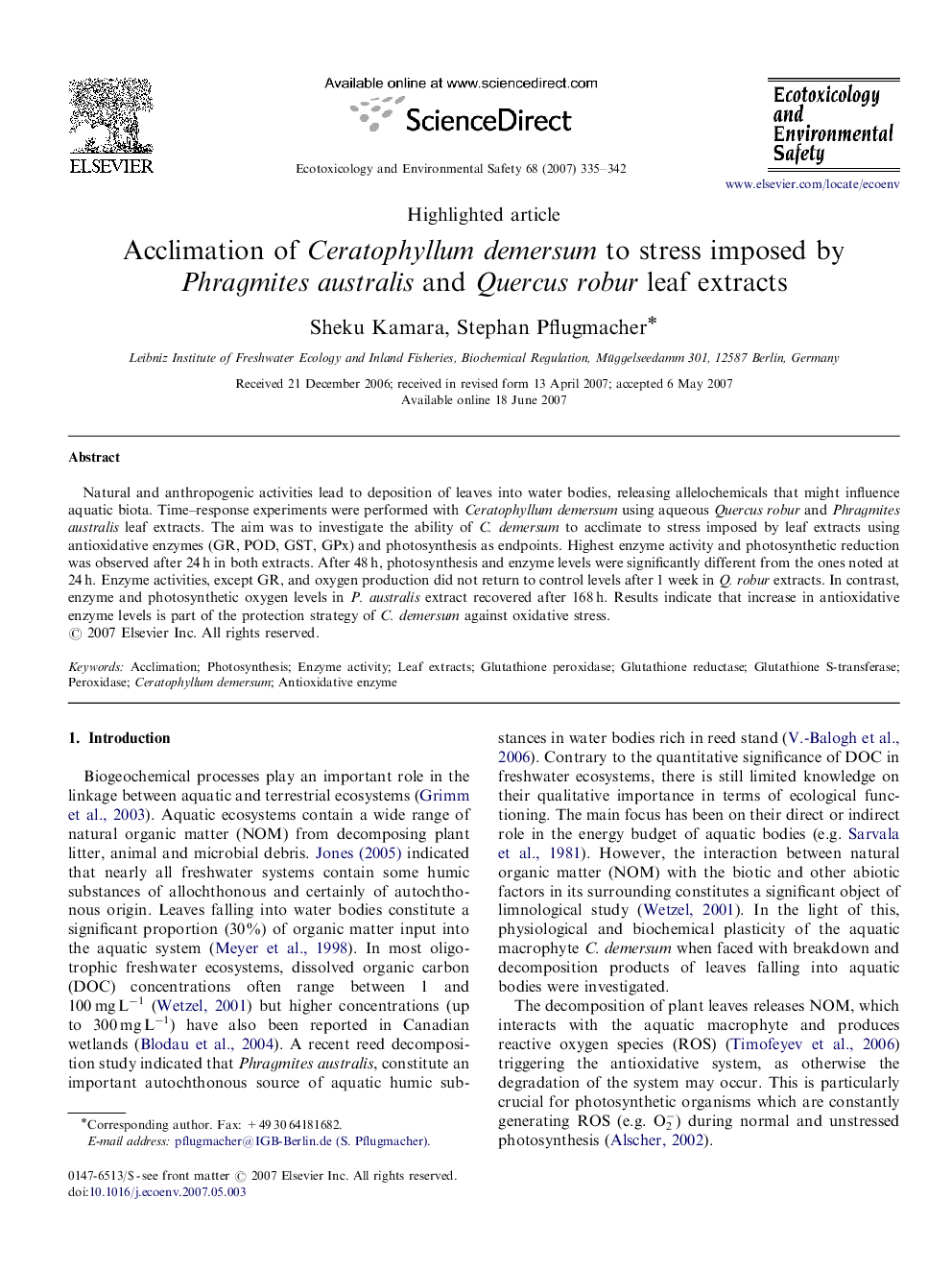| Article ID | Journal | Published Year | Pages | File Type |
|---|---|---|---|---|
| 4422384 | Ecotoxicology and Environmental Safety | 2007 | 8 Pages |
Natural and anthropogenic activities lead to deposition of leaves into water bodies, releasing allelochemicals that might influence aquatic biota. Time–response experiments were performed with Ceratophyllum demersum using aqueous Quercus robur and Phragmites australis leaf extracts. The aim was to investigate the ability of C. demersum to acclimate to stress imposed by leaf extracts using antioxidative enzymes (GR, POD, GST, GPx) and photosynthesis as endpoints. Highest enzyme activity and photosynthetic reduction was observed after 24 h in both extracts. After 48 h, photosynthesis and enzyme levels were significantly different from the ones noted at 24 h. Enzyme activities, except GR, and oxygen production did not return to control levels after 1 week in Q. robur extracts. In contrast, enzyme and photosynthetic oxygen levels in P. australis extract recovered after 168 h. Results indicate that increase in antioxidative enzyme levels is part of the protection strategy of C. demersum against oxidative stress.
